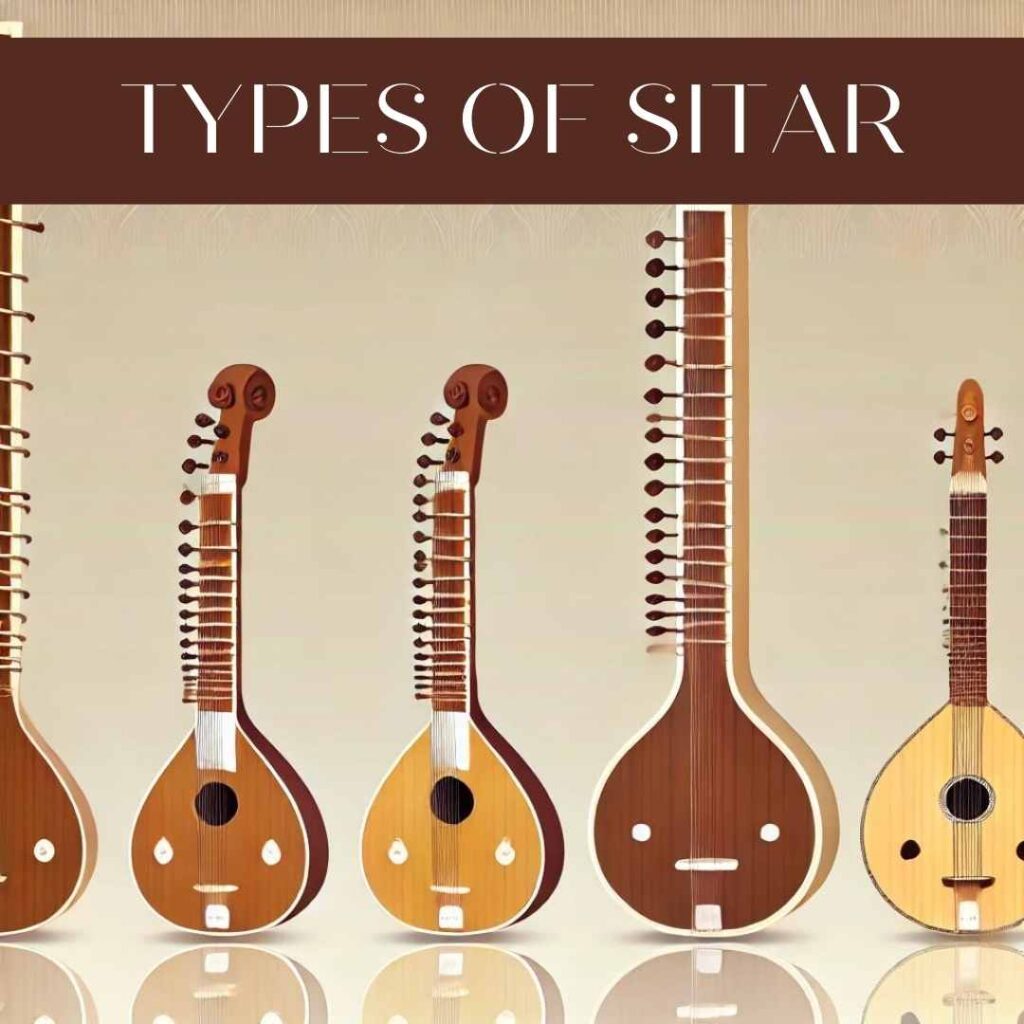Introduction to the Sitar
The sitar is a renowned stringed instrument integral to the world of Indian classical music. Rooted deeply in Indian tradition, it has captivated audiences for centuries with its resonant and melodic sound. The instrument has undergone various transformations since its inception, evolving into different forms while retaining its distinct character.
Originating from the ancient veena, the sitar became prominent during the Mughal era. Its name is derived from the Persian words “seh” (three) and “tar” (string), though modern sitars feature many more strings. This introduction will explore the world of sitars, breaking down their types, how they’re constructed, and the notable differences between them.
Traditional vs. Modern Sitars
Historical Sitar Designs
The first sitars were simpler, with fewer strings and limited tonal capabilities. However, as Indian classical music evolved, so did the sitar’s construction. Over the centuries, it gained more strings, leading to a richer, more nuanced sound that complemented the complexities of ragas in Indian classical music.
Modern Sitar Innovations
Today’s sitars incorporate contemporary materials and construction techniques, making them more durable while expanding their sonic range. Some modern sitars are designed for portability, while others are adjusted for fusion music, where Indian classical music meets jazz or rock.
Main Types of Sitars
Kharaj Pancham Sitar
This is the most common type of sitar, distinguished by its deep, bass-rich sound. The Kharaj Pancham sitar typically has 13 sympathetic strings and seven main strings. It’s favored by classical musicians who perform in traditional settings.
Gandhar Pancham Sitar
Gandhar Pancham sitars differ from the Kharaj Pancham by having fewer sympathetic strings and a more delicate sound. They’re more often used in lighter compositions and for semi-classical performances.
Vilayat Khan Style Sitar
Named after the legendary sitarist Vilayat Khan, this type of sitar is designed with a distinctive string setup and structure, allowing for a crisper, brighter tone. It’s often used for faster compositions and is highly preferred in modern settings.
Ravi Shankar Style Sitar
Ravi Shankar’s sitar is iconic for its deeper resonance and sustained sound, making it perfect for his expansive and meditative ragas. His influence has shaped sitar design for decades.
Sitar Construction and Materials
Importance of Tonewoods in Sitar Making
The body of the sitar is traditionally crafted from teak or tun wood. These woods are chosen for their durability and resonance, contributing significantly to the overall sound quality.
Role of Strings and Their Arrangements
A sitar’s strings are arranged in a complex pattern, with the main strings used for melody and sympathetic strings for resonance. The number of strings and how they’re tuned can alter the instrument’s tonal output dramatically.
Sitar Playing Styles
Traditional Techniques
Traditional sitar playing involves intricate fingerwork and precise control over string bends. Techniques such as meend (bending notes) and gamak (ornamental notes) are central to classical Indian sitar performances.
Modern Fusion Techniques
As the sitar has made its way into modern music genres, new techniques have emerged. Fusion players often experiment with amplifying the sitar or using electronic effects, bringing its sound into contemporary music like rock or jazz.
Famous Sitar Players and Their Instruments
Sitarists like Ravi Shankar, Vilayat Khan, and Anoushka Shankar have not only mastered the instrument but have also shaped its evolution. Each of these musicians has used different types of sitars, chosen to suit their distinct styles.
Buying a Sitar: What to Look For
Quality vs. Price
When purchasing a sitar, it’s important to find a balance between quality and price. Professional-level instruments are often made from superior woods and offer better tonal quality, but beginner sitars can be more affordable without sacrificing playability.
How to Choose the Right Type of Sitar for Your Playing Style
Your choice of sitar should reflect your playing style. For example, if you’re a beginner, you might want to start with a simpler, more affordable model. Professional players may prefer a sitar with custom modifications to suit their needs.
Sitar Maintenance and Care
String Care
Keeping your sitar strings clean and properly tensioned is vital for maintaining sound quality. Regularly replacing worn-out strings ensures that the instrument performs at its best.
Protecting Your Sitar from Environmental Damage
Sitars are sensitive to humidity and temperature changes. Store your sitar in a cool, dry place and use a hard case for transport to prevent damage.
Conclusion
The world of sitars is vast, with each type offering something unique to players and audiences alike. Whether you’re drawn to the deep, sonorous tones of a Kharaj Pancham sitar or the bright, lively sounds of a Vilayat Khan style sitar, there is a perfect instrument for every musician.
Instagram:@thepinklotusacademia
Facebook: @thepinklotusacademia
Enquire Now: Click Here
Learn more: The Pink Lotus Academia
Youtube: The Pink Lotus Academia
Other Blogs: Click Here
Buy recommended Yoga Apparels: https://amzn.to/4cHOiCB













